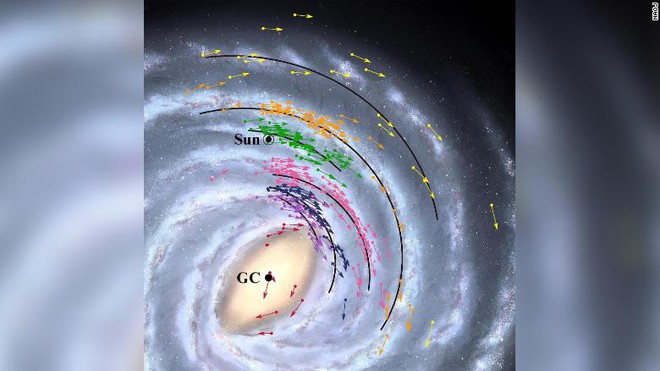It turns out that the Earth is closer to the supermassive black hole in the center of the Milky Way than we think
- Tram Ho
Accordingly, a new galaxy map has just been announced by Japanese astronomers showing that the Solar System is only about 25,800 light years from the center of the Milky Way. This is significantly shorter than the 27,700 light-years figure accepted by the International Astronomical Federation (IAU) in 1985.
However, this change does not mean that the Earth is approaching the super black hole Sagittarius A * more than 4 million times the mass of the Sun in the center of the Milky Way. Instead, this new galaxy map helps to more accurately pinpoint the position of the solar system compared to the surrounding ‘neighboring’ stars.

The position of the Solar System relative to the black hole in the center of the Milky Way galaxy
According to the latest calculations by Japanese astronomers, the rotation speed of the solar system around the center of the Milky Way is also faster than previous calculations. Specifically, the Solar System travels at a speed of 227 kilometers per second, 7 kilometers faster than the current official speed given by the IAU.
It is known that the adjustment in terms of data is made after more than 15 years of continuous observation by scientists in the radio astronomy project called VERA.
VERA stands for VLBI (Very Long Baseline Interferometry) Exploration of Radio Astrometry. This project uses a number of radio telescopes on the Japanese archipelago, then aggregates their data to create extremely clear observations, to the point that a coin is clearly visible. Moon surface.
Since 2000 until now, the VERA project has helped calculate the distances to stars emitting radio waves by calculating their parallax. With staggering resolution, it observes these stars for more than a year and tracks how their positions change compared to stars farther away.
This change of position can then be used to calculate a star’s distance from Earth, helping us determine their intrinsic brightness. A good recent example of this is the red giant Betelgeuse, which turns out to be closer to Earth than previous measurements. This means it’s not as big and bright as we think it is.
Refer to Science Alert
Source : Genk
